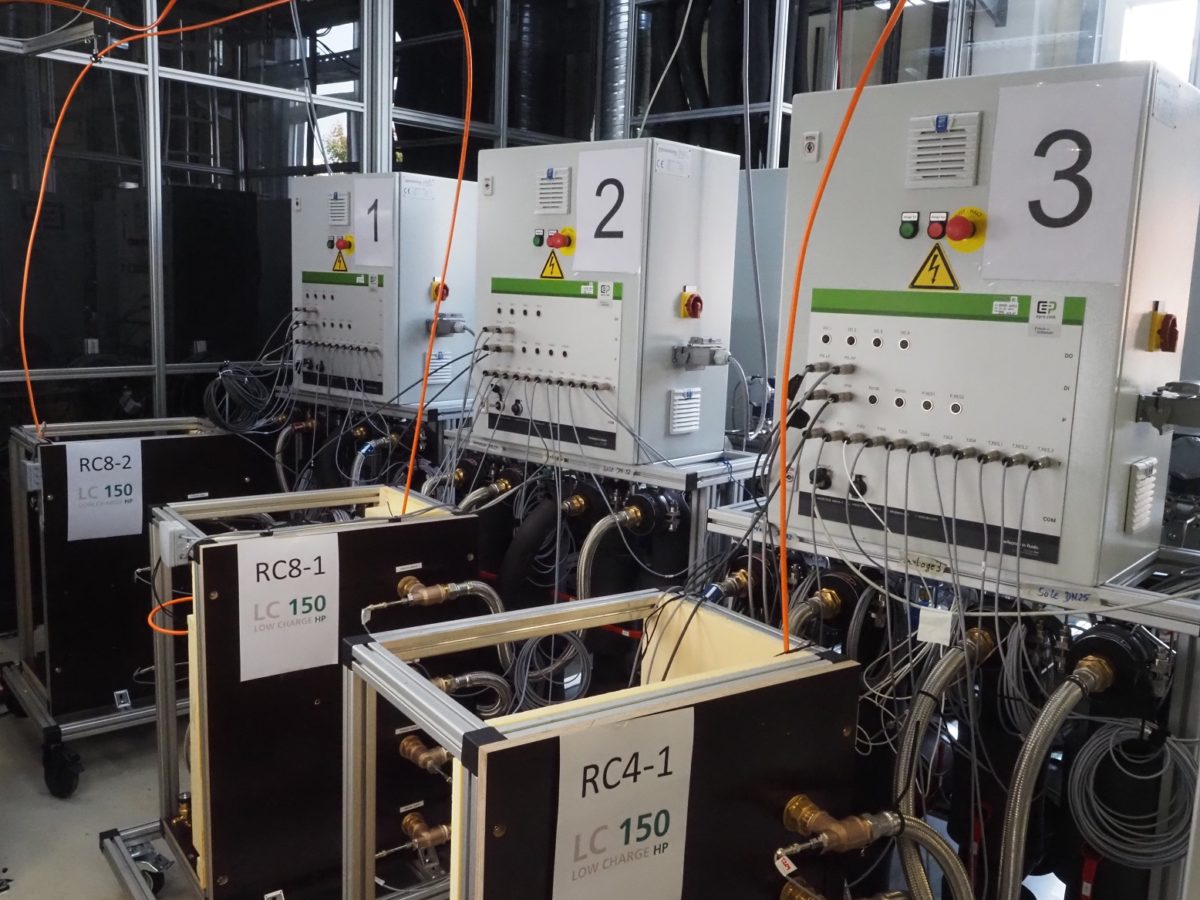Researchers at Germany’s Fraunhofer Institute ISE, together with a consortium of heat pump manufacturers, aim to develop a refrigeration circuit for brine heat pumps with propane refrigerant charges between 15g to 30g/kW, as part of the LC150 (low charge 150 g) research project.
“In Germany, only heat pumps using less than 150 grams of propane can be installed inside houses, for safety reasons,” Claudia Hanisch, in charge of communications at Fraunhofer ISE, told pv magazine.
The team have now achieved a new efficiency record and surpassed this goal, building a device with a maximum heating capacity of 12.8 kW using only 124 grams of propane, with an efficiency of 4.7%. This amounts to a refrigerant charge of 9.7g/kW, roughly equivalent to the amount of propane in five cigarette lighters.
Because it uses less propane, which is flammable, the new circuit is safer. The team says it also improves on price and efficiency. Commercially available heat pumps currently use around 60 grams of propane per kilowatt of heating capacity, meaning the device beats their refrigerant charge sixfold.
The refrigeration circuit cannot be commercialized in its current form, because it uses a semi-hermetic automotive compressor which isn’t designed for the long operating hours required for heat pumps over periods of 20 years, according to a Fraunhofer ISE statement.
“However, the manufacturer is already working on fully hermetic compressors with a longer service life,” said Clemens Dankwerth, project manager at the research institution.
Popular content
The goal is for the final version of the refrigeration circuit to use slightly more refrigerant and have a slightly larger heat exchanger to achieve a more balanced system.
The team is confident they will achieve the 15g/kW refrigerant charge goal under real operating conditions. So far, a refrigeration circuit using a conventional fully hermetic compressor has been the second-best forming device in their test program, achieving a charge of 164 grams of propane at an efficiency of 4.8% and a heating capacity of 8.1 kW, amounting to a 20g/kW refrigerant charge.
The Fraunhofer ISE project team has been building prototypes for brine heat pumps since October 2021, assembling the individual components (evaporator, compressor, condenser, heat exchanger and expansion valve) in a variety of different constellations, according to statement by the institution. The devices are measured on test stands 24 hours a day for two weeks at a time. Each prototype is run at between 30 and 150 operating points, and the measured values are recorded by 26 sensors. The team has built 26 prototypes so far.
In addition to the compressor, the research team also adjusted other factors to reduce the amount of refrigerant, including reducing the internal volume of the heat exchangers and the amount of oil required. Additional components such as sensors have been kept to a minimum, and the piping has been kept as short as possible to reduce internal volumes, the institution said in a statement.
This content is protected by copyright and may not be reused. If you want to cooperate with us and would like to reuse some of our content, please contact: editors@pv-magazine.com.


An efficiency of 4.8% makes no sense.
Is that a coefficient of production of 4.8 instead?
My understanding is that it is a misuse of the term “efficiency”. The heat delivered is 4.8 times the energy input, but that value is not helpful with no mention of the temperatures in and out. If the delta t is 10 C, then I expect the factor to be 10, not 5. It the outdoor temp is -20 and the delivered temp is 25, it would be something like 2, right? So the 4.8 is the result of an undescribed duty cycle.